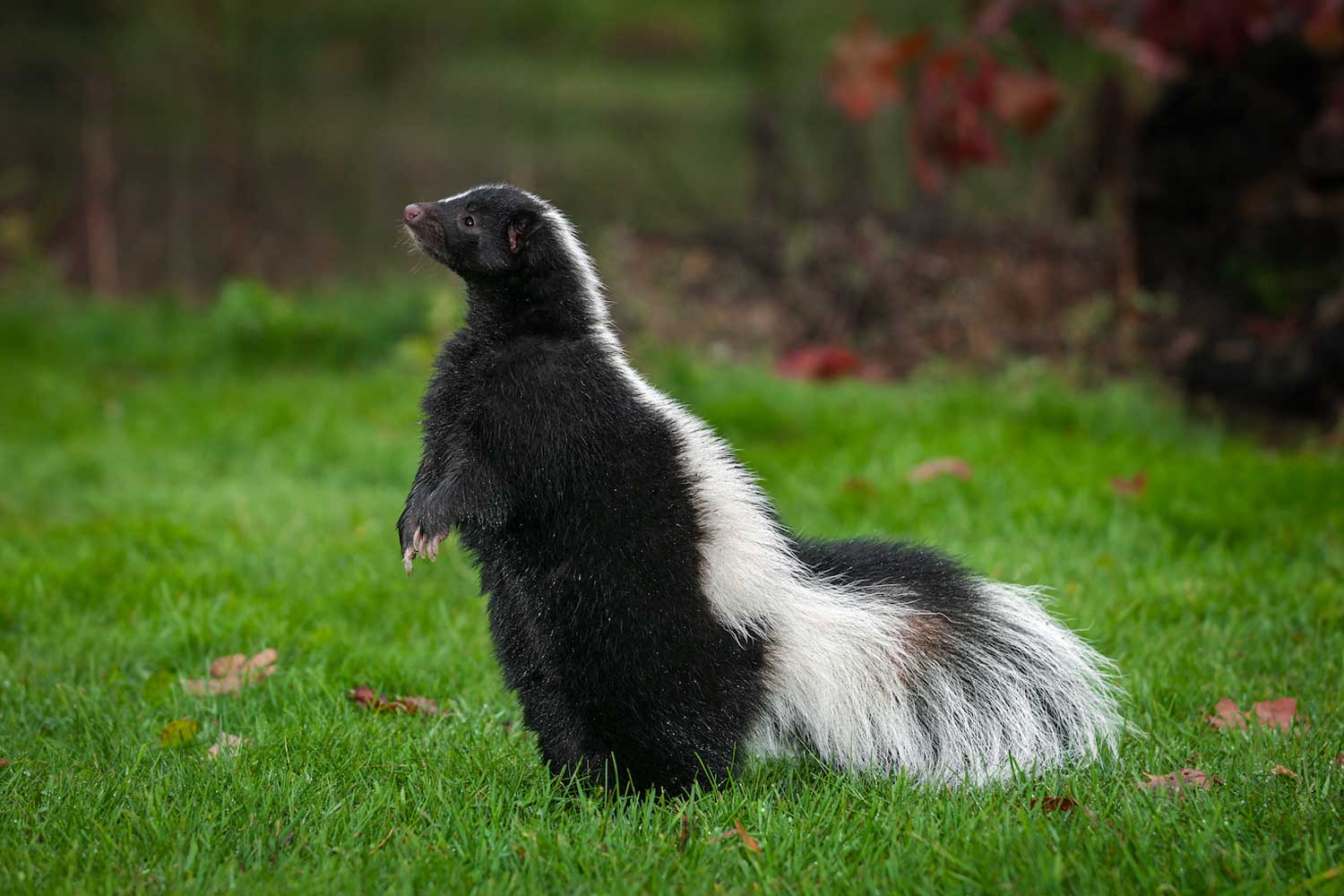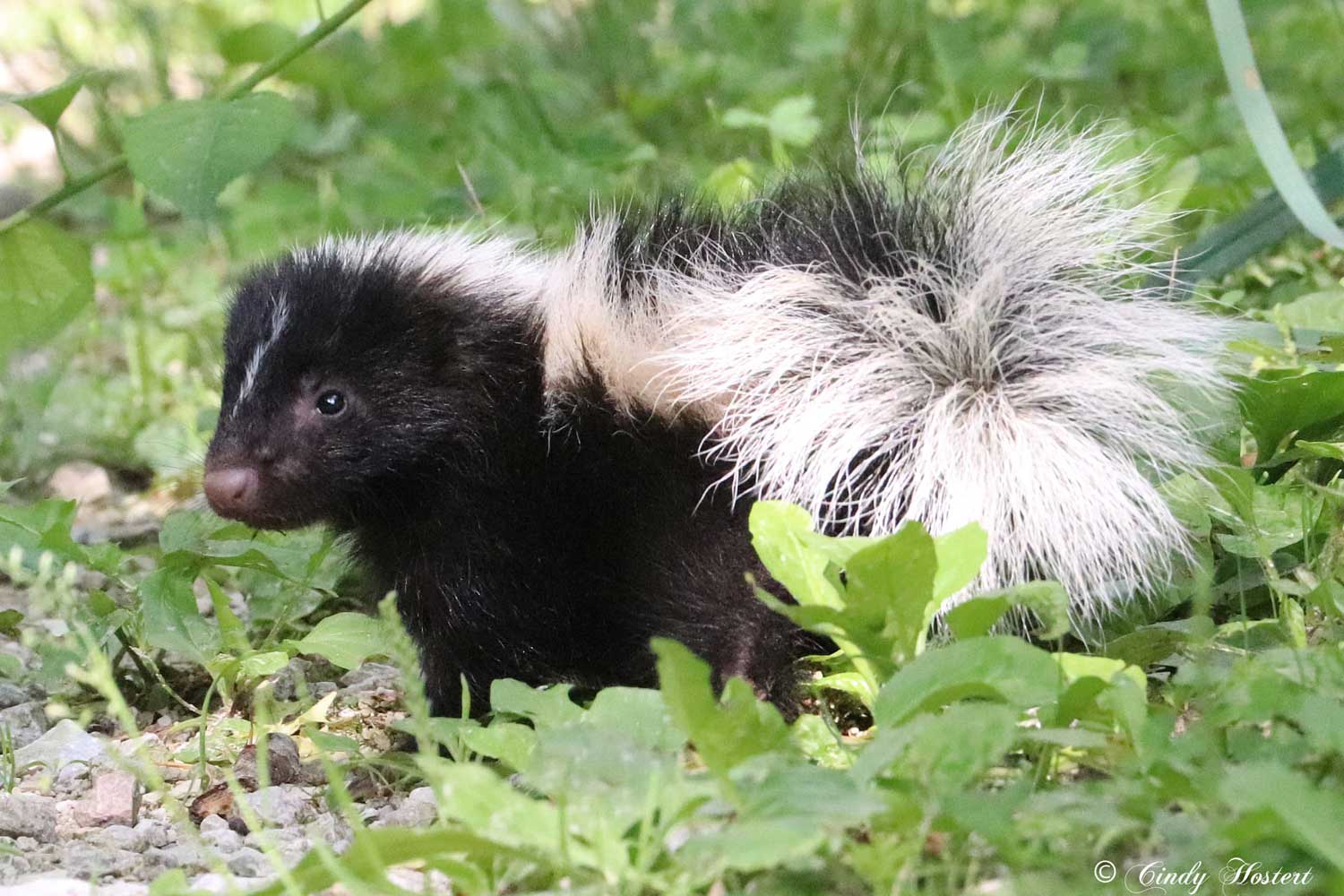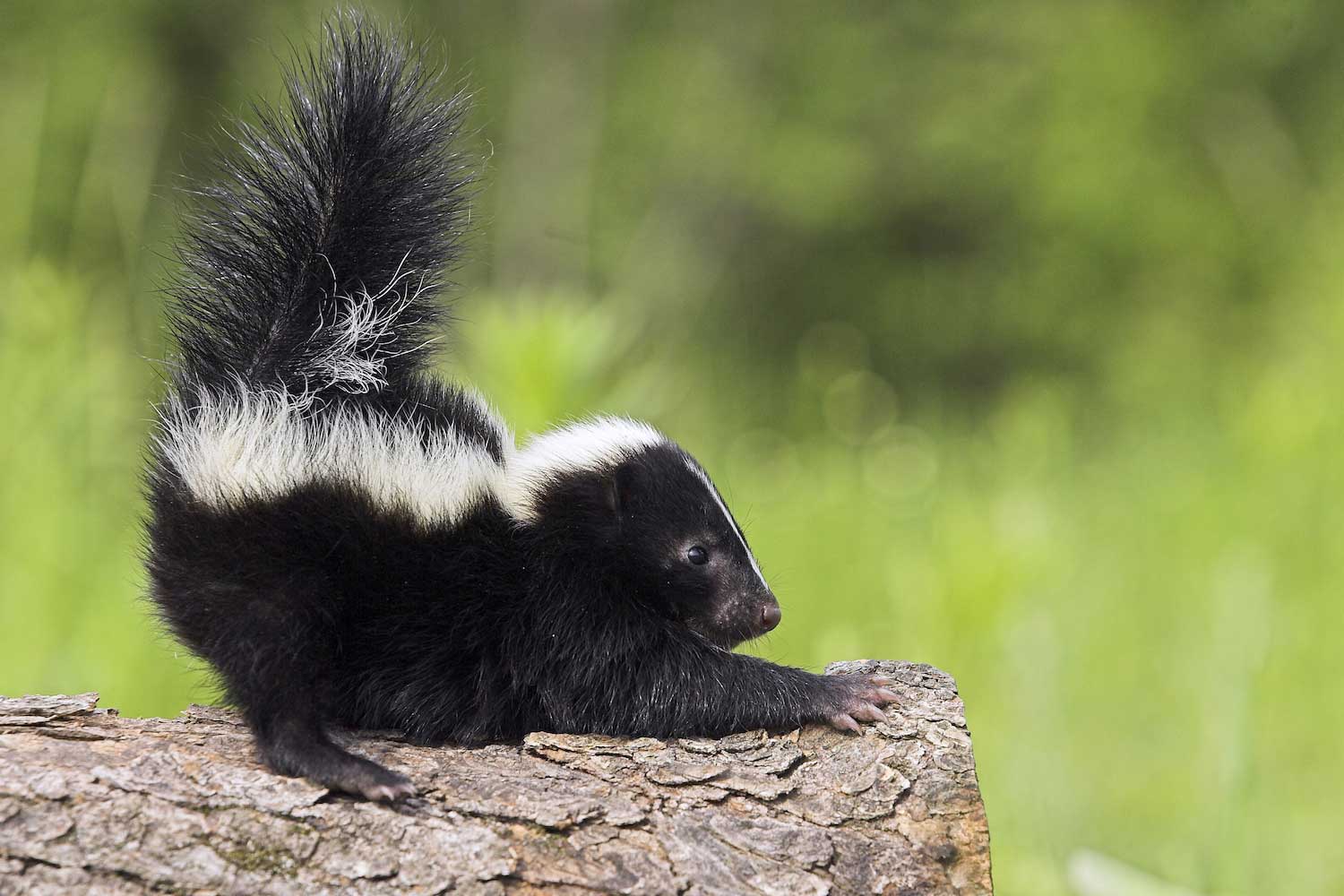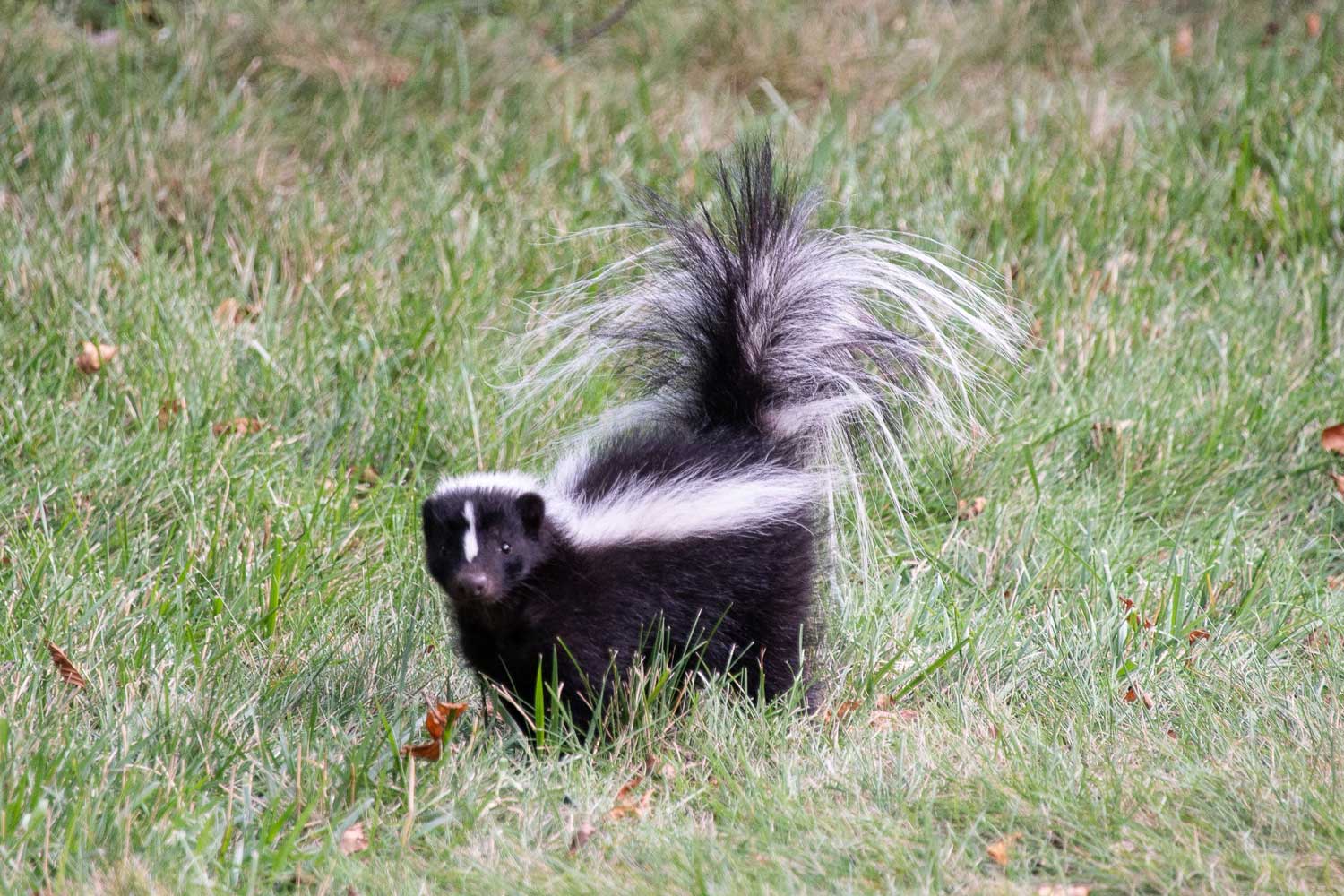The stink on skunks

If you — or more likely, your dog — find yourself on the receiving end of a skunk’s stinky spray, you can’t say you weren’t warned.
Skunks are generally easygoing, but they will use their powerful spray when they feel threatened or as if they cannot escape. However, before they release the noxious spray, they give fair warning.
Before spraying, a skunk will lift its tail, stamp its feet and hiss and growl. This is a sign the skunk is feeling endangered, and it may repeat this behavior several times to scare away a potential predator. If the threat continues, the skunk will turn around, lift its rear legs and release its notorious spray.
As if that display wasn’t enough, there’s all the more reason to heed a skunk’s warning: They have good aim. A skunk can accurately direct its spray at a target more than 10 feet away, and some of the spray can reach distances of almost 20 feet. A skunk’s scent can be detected up to 20 miles from where it was discharged.
Skunks typically direct their spray at the eyes of their target, and while it can sting and cause temporary blindness or blurred vision, it will not cause permanent damage.
Skunks in Illinois
Several skunk species can be found throughout the United States, but the most common in Illinois and elsewhere is the striped skunk, famous for the two white stripes that run the length of its otherwise black body.
Skunks are mainly nocturnal, venturing out at night or in the hours just before dusk and dawn. They live in many different types of environments, including rural, urban and suburban, but are usually close to a source of water. In rural areas, skunks tend to live near farmland and pastures. In more urban areas, you can often find skunks near railroads and high-tension lines, which provide easy paths to travel.
Skunks are omnivorous, eating both plants and animals. They prefer insects and grubs, but also eat mice, voles, birds, ground squirrels and rabbits along with corn, cherries, tomatoes, peppers and other nightshade plants.
Keeping skunks at bay
Skunks live in our area year-round, but we tend to see them more in the summer months. This is, in part, because young skunks begin to take short trips from the den with their mothers in late June and July, and then venture out on their own as they get older, the Illinois Department of Natural Resources reports.
Lately, skunk sightings – or more often, smellings – may seem even more numerous than in recent memory, thanks to a “skunk epidemic,” the Daily Herald reports. This increase in the skunk population is because skunks have a boom-and-bust life cycle, and we’re in the midst of a boom right now.
For the most part, skunks do their best to avoid humans, but you can also take steps to make your home and yard an unfriendly place for them to take up residence.
Most importantly, because skunks are opportunistic eaters, make sure you aren’t providing them an easy food source, the Humane Society recommends. Make sure your garbage cans are secured and you aren’t feeding pets or storing pet food outside. You should also make sure skunks don’t have easy access to a shed, garage or other outbuilding or can get under your porch, deck or foundation to make a den.
If you do find a den in your yard, you can try repellents, such as kitty litter or products containing castor oil or capsaicin. Place the repellent near the den, so the skunk will have to go past it to get in and out, according to the Humane Society.
Getting rid of the skunk smell
Most people know the old adage that bathing or washing with tomato juice helps remove skunk odor if you are unfortunate enough to get sprayed. While tomato juice may help lessen the powerful stench, it will not neutralize it, so it’s not the most effective option.
Instead, the University of Illinois Extension recommends creating a solution by mixing together 1 quart of 3 percent hydrogen peroxide solution, 1/4 cup of baking soda and 1 teaspoon of liquid soap. You can use white vinegar as a substitute for the peroxide if you don’t have any on hand. Do not add water to the mixture.
This odor-removal solution can safely be used on clothing and skin as well as dogs and cats. Wearing rubber gloves, rub the solution all over, scrubbing well, before rinsing off. Keep in mind when using on pets that you should not leave the solution on their fur for very long, because it can bleach their fur, the Humane Society reports.






